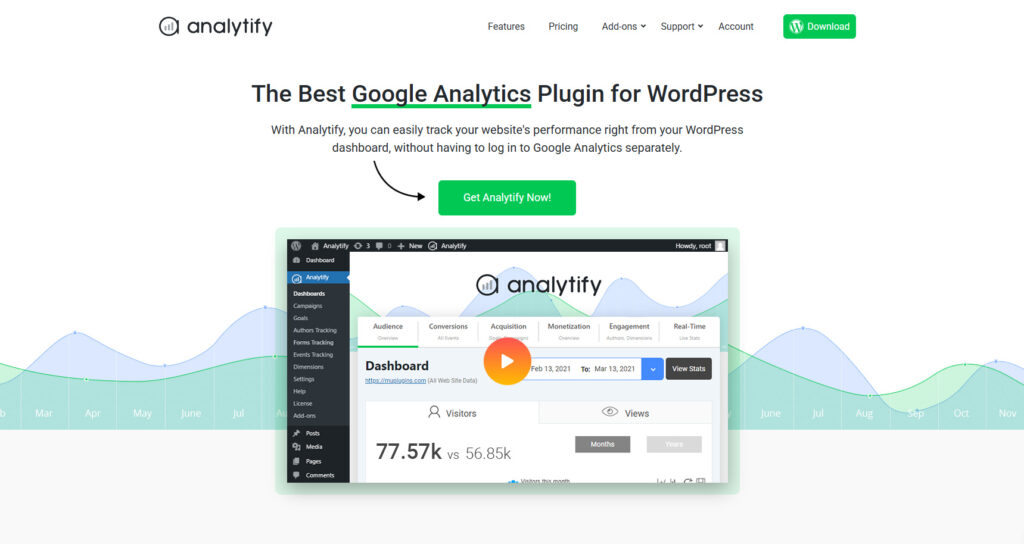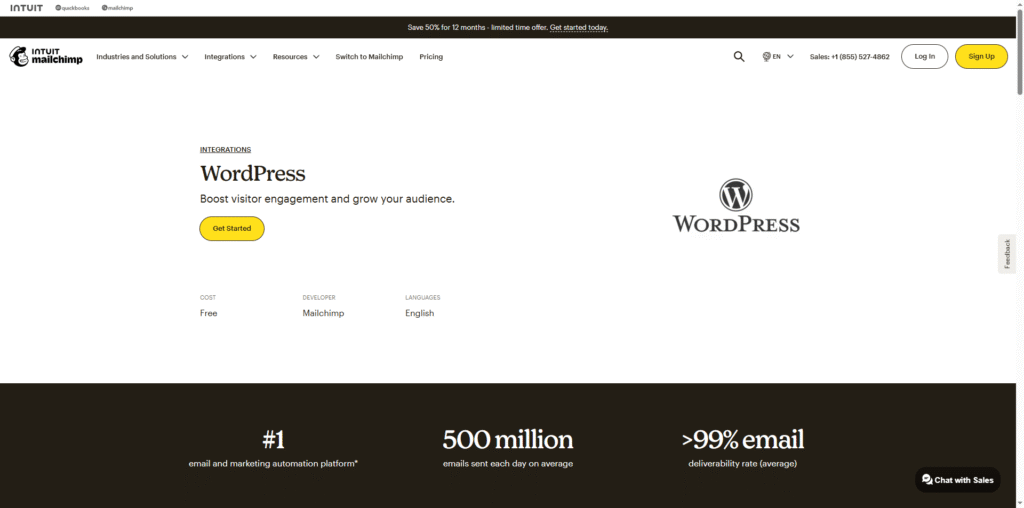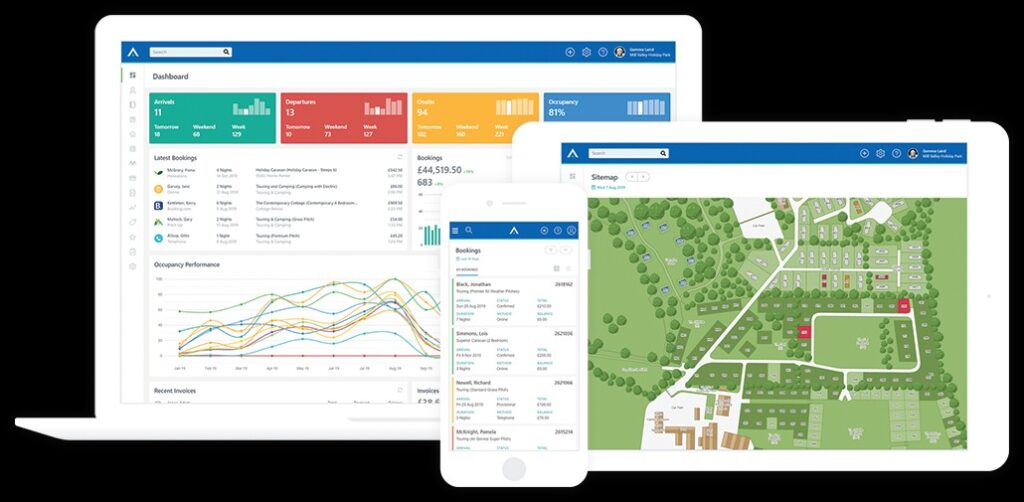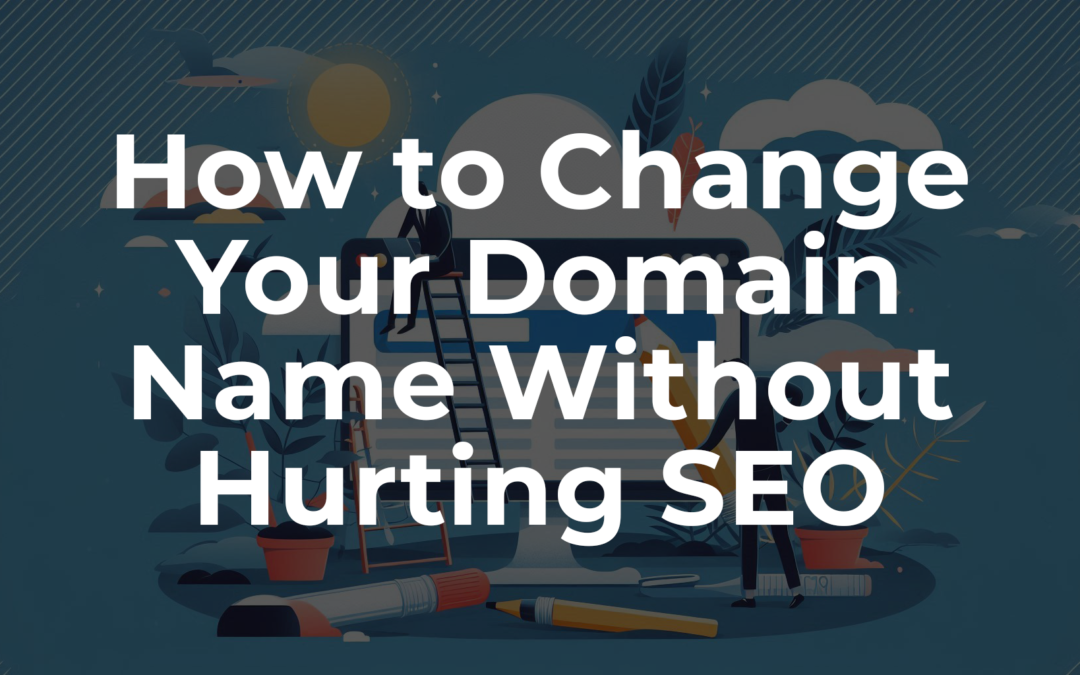
General
You’ve just installed WordPress. You’re staring at a blank dashboard, excited about building your website. But here’s the problem: vanilla WordPress is like a smartphone without apps—functional, but missing the features that make it truly powerful.
The good news? WordPress plugins can transform your basic site into a marketing machine, complete with analytics, SEO optimization, social sharing, and bulletproof security. The bad news? There are over 60,000 plugins in the WordPress repository, and choosing the wrong ones can slow down your site or create security vulnerabilities.
Here’s what most beginners don’t realize: you don’t need dozens of plugins. You need the right 10-15 essential plugins that cover all the critical functionality your website requires to succeed.
In this comprehensive guide, I’ll walk you through the top 10 essential plugins for WordPress that every website needs in 2025—from analytics and SEO to backups and performance optimization. These aren’t random picks; they’re battle-tested solutions that power millions of successful WordPress sites.
How to Choose Essential Plugins for Your WordPress Site
Before we dive into specific plugins, let’s talk about smart plugin selection. Installing too many plugins is one of the biggest mistakes WordPress beginners make.
The Real Cost of Plugin Overload
Every plugin you install adds code to your website. More code means:
- Slower page loading times (hurting WordPress performance)
- More potential security vulnerabilities
- Increased compatibility conflicts
- Higher maintenance burden (updates, troubleshooting)
- Greater resource consumption on your server
The sweet spot: Most well-optimized WordPress sites run 15-25 plugins maximum. Quality matters infinitely more than quantity.
Key Criteria for Essential Plugins
When evaluating whether a plugin deserves a spot on your website, ask these critical questions:
1. Does it solve a specific problem? Install plugins only when you have a clear need. Don’t install a plugin “just in case” or because it seems cool. Every plugin should serve a defined purpose that directly benefits your website goals.
2. Is it actively maintained? Check when the plugin was last updated. Plugins abandoned for over a year pose security risks and may not work with current WordPress versions. Look for plugins updated within the last 3 months.
3. Does it have good reviews and support? Check the plugin’s rating (aim for 4+ stars) and read recent reviews. Look for responsive developers who actively answer support questions. Poor support means you’re on your own when problems arise.
4. Is it compatible with your theme and other plugins? Before installing, verify compatibility with your WordPress version and existing plugins. Check the plugin’s compatibility notes and recent reviews for conflict reports.
5. Will it impact site performance? Some plugins are resource hogs that dramatically slow your site. Research performance impact before installation. Lightweight alternatives often exist for bloated popular plugins.
6. Can native WordPress features do the job instead? WordPress has built-in capabilities that many don’t realize. For example, WordPress natively handles basic galleries, menus, and widgets—you don’t need plugins for these unless you need advanced features.
The Plugin Priority Framework
Organize your plugin needs into priority tiers:
Tier 1 – Critical (Must Have):
- Security and backups
- SEO optimization
- Performance optimization
- Contact forms and email delivery
Tier 2 – Important (Should Have):
- Analytics and tracking
- Social media integration
- Caching and speed optimization
- Spam protection
Tier 3 – Nice to Have (Optional):
- Advanced customization
- Additional user experience features
- Marketing automation tools
- Specialized functionality
Start with Tier 1 essentials, then add Tier 2 as needed. Only install Tier 3 plugins if they directly support your business objectives.
Red Flags: Plugins to Avoid
Watch out for these warning signs:
- Nulled or pirated premium plugins – Major security risk, no updates or support
- Plugins with no reviews or extremely low ratings – Usually indicates quality issues
- Plugins promising “magic” results – If it sounds too good to be true, it probably is
- Abandoned plugins – Not updated in 2+ years signals abandonment
- Plugins that request excessive permissions – Unnecessary access is a security concern
- All-in-one mega-plugins – Often bloated with features you’ll never use
The Top 10 Essential Plugins for WordPress
Now let’s explore the essential plugins that belong on virtually every WordPress website. These plugins cover all critical functionality without bloating your site.
1. Analytify: Google Analytics Inside WordPress

Best Google Analytics Plugin for WordPress
What it does: Brings Google Analytics data directly into your WordPress dashboard with beautiful, easy-to-understand reports.
Why you need it: You can’t improve what you don’t measure. Understanding your website traffic, user behavior, and content performance is fundamental to growth. While Google Analytics is powerful, its interface can be overwhelming for beginners.
Analytify solves this by displaying your most important analytics right where you work—inside WordPress. No more switching tabs or deciphering complex Google Analytics reports.
Key Features:
- Real-time visitor tracking in WordPress dashboard
- Page-level analytics for individual posts and pages
- Top content, referrers, and search terms at a glance
- Easy-to-understand visual reports
- Google AdSense tracking integration
- E-commerce tracking for WooCommerce
- Campaign tracking for marketing initiatives
- Automatic Google Analytics setup (no code required)
Best for: Bloggers, marketers, and business owners who want actionable analytics without the complexity of Google Analytics.
Free vs Pro:
- Free version: Basic analytics, dashboard stats, top pages/posts
- Pro version ($59/year): E-commerce tracking, real-time stats, email reporting, advanced demographics
Pro tip: Set up Analytify immediately after launching your site to build historical data. You’ll thank yourself later when making data-driven decisions about content strategy.
2. LoginPress: Custom Login and Secure UX

LoginPress wp-login Custom Login Page Customizer
What it does: Customizes your WordPress login page and enhances security through better login experiences and protection features.
Why you need it: The default WordPress login page is boring and screams “this is a WordPress site” to potential hackers. Worse, it offers no protection against brute force attacks where hackers try thousands of password combinations.
LoginPress transforms your login experience while adding critical security layers. A professional, branded login page builds trust with users and team members, while security features protect your site from unauthorized access.
Key Features:
- Drag-and-drop login page customizer
- Custom logos, backgrounds, and colors
- Login redirect controls
- Login error messages (without revealing user existence)
- reCAPTCHA integration for bot protection
- Login attempt limiting
- Activity logs showing login attempts
- Two-factor authentication (Pro)
- Social login options (Pro)
Best for: Business websites, membership sites, and anyone serious about WordPress security and branding.
Free vs Pro:
- Free version: Login customization, basic security features
- Pro version ($39/year): 2FA, login attempt limits, social login, activity logs
Security note: Pair LoginPress with other security measures like SSL certificates and regular backups for comprehensive protection.

Simple Social Media Share Buttons – Essential Plugin for WordPress
What it does: Adds social sharing buttons to your posts and pages without slowing down your site.
Why you need it: Social sharing is crucial for content distribution, but most social sharing plugins are bloated with features you’ll never use. They load dozens of scripts that significantly slow page load times.
Simple Social Buttons does exactly what its name suggests—provides clean, fast social sharing without the bloat. Every share amplifies your content reach and brings new visitors to your site.
Key Features:
- Lightweight code (minimal performance impact)
- Share counts display (optional)
- Multiple button styles and positions
- Supports all major social networks (Facebook, Twitter, LinkedIn, Pinterest, etc.)
- Mobile-responsive design
- Customizable colors and sizes
- No external dependencies or heavy scripts
- Works with any theme
Best for: Bloggers, content creators, and businesses wanting to amplify content reach through social sharing.
Free vs Pro:
- Free version: All essential sharing features, multiple platforms
- Pro version ($29/year): Advanced customization, placement options, A/B testing
Performance tip: Only enable social networks your audience actually uses. Every additional button is another HTTP request, so be strategic.

Related Posts Thumbnails Plugin for WordPress
What it does: Displays related posts with attractive thumbnails at the end of your content, encouraging visitors to read more.
Why you need it: The average website visitor leaves after viewing just one page. Related posts combat this by suggesting relevant content that interests readers, increasing engagement, time on site, and pages per session—all positive signals for SEO.
Related Posts Thumbnails uses sophisticated algorithms to find truly relevant content, not just random posts. The thumbnail display is visually appealing and encourages clicks.
Key Features:
- Automatic related post detection based on categories and tags
- Customizable thumbnail sizes and layouts
- Grid or list display options
- Post excerpt display (optional)
- Exclude specific posts or categories
- Custom post type support
- Responsive design for mobile devices
- Lightweight and fast-loading
Best for: Blogs, news sites, and content-heavy websites wanting to increase pageviews and reduce bounce rates.
Free vs Pro:
- Free version: Essential related post functionality with thumbnails
- Pro version ($29/year): Advanced matching algorithms, A/B testing, analytics
SEO benefit: Increased time on site and lower bounce rates signal quality to Google, potentially improving your search engine rankings.
5. UCMM (Under Construction and Maintenance Mode): Control Site Visibility

Under Construction Coming Soon & Maintenance Mode
What it does: Displays a “coming soon” or “maintenance mode” page to visitors while you work on your site behind the scenes.
Why you need it: Launching a half-finished website damages your credibility. Similarly, performing major updates on a live site exposes visitors to broken pages and error messages. UCMM (Under Construction and Maintenance Mode) lets you control exactly what visitors see while you perfect your site.
The plugin is especially valuable when migrating WordPress to a new host, making design changes, or building a new site before launch.
Key Features:
- One-click maintenance mode activation
- Customizable coming soon pages
- Countdown timer for launches
- Email subscription collection
- Social media link integration
- Whitelist specific users or IP addresses
- Mobile-responsive designs
- SEO-friendly (returns proper HTTP headers)
- Custom CSS and HTML support
Best for: New websites under construction, existing sites during major updates, and pre-launch marketing campaigns.
Free vs Pro:
- Free version: Basic maintenance mode with customization
- Pro version ($39/year): Advanced templates, email marketing integration, analytics
Launch strategy: Use UCMM with a countdown timer and email collection to build anticipation and capture leads before your official launch.

WPCode – Insert Headers and Footers + Custom Code Snippets – WordPress Code Manager
What it does: Allows you to easily insert code snippets, scripts, and content into your site’s header or footer without editing theme files.
Why you need it: Many essential services require adding code to your site’s header or footer—Google Analytics, Facebook Pixel, verification codes, custom CSS, and third-party integrations. Editing theme files directly is risky and your changes disappear when you update your theme.
Headers and Footers provides a safe, theme-independent way to add these code snippets that persists through theme changes and updates.
Key Features:
- Insert code in header (before </head> tag)
- Insert code in footer (before </body> tag)
- Insert code after opening <body> tag
- No theme file editing required
- Changes persist through theme updates
- Syntax highlighting for easier editing
- Page-specific code insertion
- Support for any code type (JavaScript, CSS, HTML, meta tags)
Best for: Every WordPress site that uses third-party services, tracking codes, or custom scripts.
Common use cases:
- Google Analytics tracking code
- Facebook Pixel for ad tracking
- Google Tag Manager
- Site verification codes (Google Search Console, Bing)
- Custom fonts from Google Fonts or Adobe Fonts
- Live chat widget scripts
- Heatmap and user behavior tracking (Hotjar, Crazy Egg)
- Custom CSS for design tweaks
Safety tip: Always backup your site before adding new code. Test changes on a staging site first if possible. One misplaced semicolon can break your entire site.
7. Yoast SEO: Optimize for Search Engines

Yoast SEO – Advanced SEO with real-time guidance and built-in AI
What it does: Provides comprehensive SEO tools to optimize your content, technical SEO, and site structure for better search engine rankings.
Why you need it: SEO isn’t optional—it’s how potential customers find you through Google. But technical SEO can be overwhelming for beginners. Yoast SEO simplifies the complex world of search optimization with clear guidance and actionable recommendations.
Yoast is the most popular WordPress SEO plugin with over 5 million active installations. It handles everything from on-page optimization to XML sitemaps to social media integration.
Key Features:
- Real-time content analysis and SEO scoring
- Focus keyword optimization
- Readability analysis
- XML sitemap generation
- Breadcrumb navigation
- Social media preview and optimization
- Schema markup (structured data)
- Duplicate content prevention (canonical URLs)
- Meta title and description templates
- Internal linking suggestions
- Cornerstone content identification
Best for: Anyone serious about ranking in search engines—from beginner bloggers to established businesses.
Free vs Pro:
- Free version: All core SEO features (sufficient for most users)
- Pro version ($99/year): Multiple focus keywords, redirect manager, internal linking suggestions, 24/7 support
SEO strategy: Combine Yoast SEO with these top SEO strategies and follow this SEO guide for beginners for comprehensive optimization.
Important note: Yoast SEO is powerful but not magic. Green lights don’t guarantee rankings—focus on creating genuinely helpful content for your audience while following Yoast’s technical guidance.
8. UpdraftPlus: WP Backup & Migration Plugin

UpdraftPlus WP Backup & Migration Plugin
What it does: Automatically backs up your entire WordPress site to cloud storage and provides simple one-click restoration when needed.
Why you need it: Backups are insurance for your website. Hacks, server failures, plugin conflicts, and human errors can destroy months or years of work in seconds. Without backups, you’re gambling with your online presence.
UpdraftPlus is the most popular backup plugin for WordPress because it makes backup and restoration genuinely simple, even for non-technical users.
Key Features:
- Automated scheduled backups (daily, weekly, monthly)
- Multiple cloud storage options (Google Drive, Dropbox, Amazon S3)
- One-click restoration
- Separate database and file backups
- Manual backup creation anytime
- Backup encryption
- Email notifications for backup status
- Migration and cloning tools (Pro)
- Incremental backups (Pro)
Best for: Every WordPress site. Period. Backups aren’t optional.
Free vs Pro:
- Free version: Complete backup and restore functionality (sufficient for most small sites)
- Pro version ($70/year): Incremental backups, migration tools, priority support, advanced scheduling
Critical reminder: Backups only work if you test them. Run a test restoration at least once to verify your backups actually work. The worst time to discover backup problems is during an emergency.
Comprehensive backup guide: Learn more about WordPress backup best practices and why automated backups are essential for WordPress security.

WP Mail SMTP by Mailchimp
What it does: Ensures WordPress emails (contact forms, password resets, notifications) actually reach recipients’ inboxes instead of spam folders.
Why you need it: Here’s a dirty secret about WordPress: the default email sending method is unreliable. Many hosting servers aren’t configured properly for email delivery, causing WordPress emails to bounce or land in spam folders.
You might not even realize you’re missing important contact form submissions, user notifications, or password reset requests. WP Mail SMTP fixes this by routing emails through reliable SMTP services.
Key Features:
- Easy SMTP configuration
- Multiple mailer options (Gmail, Outlook, SendGrid, Mailgun, etc.)
- Email logging (see what’s being sent and track delivery)
- Test email functionality
- White glove setup service (Pro)
- Detailed documentation for all major email services
- Backup SMTP connection (Pro)
- Smart routing (Pro)
Best for: Every WordPress site with contact forms, user registrations, or any email functionality.
Free vs Pro:
- Free version: Full SMTP functionality with multiple mailer options
- Pro version ($49/year): Email logging, white glove setup, backup connections
Popular SMTP services to use:
- Gmail: Free for personal use, reliable
- SendGrid: Free for 100 emails/day
- Mailgun: Free for 5,000 emails/month
- Postmark: Excellent deliverability, paid service
- Amazon SES: Pay-as-you-go, extremely reliable
Setup tip: After configuring WP Mail SMTP, send a test email to multiple addresses (Gmail, Yahoo, Outlook) and check if they arrive in inbox or spam folder.
10. Smush: Image Optimization | Convert WebP & AVIF

Smush Image Optimization Convert WebP & AVIF
What it does: Automatically compresses and optimizes images to reduce file sizes without visible quality loss, dramatically improving site speed.
Why you need it: Images typically account for 50-90% of total page weight. Unoptimized images are the #1 cause of slow WordPress sites. Slow sites frustrate visitors, increase bounce rates, and hurt search engine rankings.
Smush optimizes images automatically as you upload them, ensuring your site stays fast without requiring manual image compression.
Key Features:
- Automatic image compression on upload
- Bulk optimization for existing images
- Lossless and lossy compression options
- Lazy loading (images load only when visible)
- WebP conversion for modern browsers
- Image resizing (detect and resize oversized images)
- CDN delivery (Pro)
- Incorrect size image detection
- Works with any WordPress theme
Best for: Every WordPress site with images—especially photography sites, portfolios, e-commerce stores, and image-heavy blogs.
Free vs Pro:
- Free version: Compress 50 images at a time, essential optimization features
- Pro version ($49/year): Unlimited compressions, lossy compression, CDN, auto-resize
Performance impact: Optimized images can reduce page size by 50-70%, cutting load times from 5 seconds to 2 seconds—a massive improvement for WordPress performance and user experience.
Best practice: Always optimize images before uploading when possible, then use Smush as a safety net. Consider running bulk optimization on existing images after installation.
How These Plugins Work Together: Real-World Setup Scenarios
Understanding how these essential plugins complement each other helps you build a cohesive WordPress site. Here are practical scenarios showing how they work together.
Scenario 1: Launching a New Business Website
Your goal: Create a professional website with analytics, SEO, and lead generation capabilities.
Essential plugin stack:
- UCMM – Hide site from public while building
- Yoast SEO – Optimize all pages before launch
- Smush – Optimize images for fast loading
- Headers and Footers – Add Google Analytics tracking code
- Analytify – Monitor traffic after launch
- WP Mail SMTP – Ensure contact form submissions arrive
- UpdraftPlus – Backup before and after launch
- LoginPress – Brand login page and secure admin access
Workflow: Enable UCMM immediately to show “coming soon” page → Build site with Yoast SEO guidance → Optimize images with Smush → Add tracking codes via Headers and Footers → Configure contact form with WP Mail SMTP → Set up automated backups with UpdraftPlus → Customize and secure login with LoginPress → Launch site and monitor with Analytify
Scenario 2: Optimizing an Existing Blog for Growth
Your goal: Improve SEO rankings, increase engagement, and protect your content investment.
Essential plugin stack:
- Yoast SEO – Audit and optimize existing content
- Related Posts Thumbnails – Keep readers on site longer
- Simple Social Buttons – Enable content sharing
- Analytify – Track which content performs best
- Smush – Bulk optimize all existing images
- UpdraftPlus – Protect years of content with backups
- Headers and Footers – Add Facebook Pixel for remarketing
Workflow: Install Yoast SEO and audit current content → Bulk optimize images with Smush → Add Related Posts to increase pages per session → Enable social sharing with Simple Social Buttons → Set up analytics with Analytify → Implement automated backups with UpdraftPlus → Add remarketing tracking via Headers and Footers
Scenario 3: Securing an E-commerce Site
Your goal: Protect customer data, ensure transaction emails deliver, and maintain site uptime.
Essential plugin stack:
- UpdraftPlus – Daily automated backups to cloud storage
- LoginPress – Limit login attempts, add 2FA
- WP Mail SMTP – Reliable order confirmation emails
- UCMM – Maintenance mode for updates without disruption
- Smush – Optimize product images for fast browsing
- Analytify – Track conversion funnels and cart abandonment
- Yoast SEO – Optimize product pages for search
Workflow: Implement daily backups with UpdraftPlus → Secure login with LoginPress (2FA enabled) → Configure reliable transactional email with WP Mail SMTP → Optimize all product images with Smush → Set up conversion tracking with Analytify → Optimize product pages with Yoast SEO → Use UCMM for maintenance windows
Scenario 4: Building a Portfolio Website
Your goal: Showcase work beautifully, rank for relevant searches, and collect inquiries.
Essential plugin stack:
- Smush – Optimize portfolio images without quality loss
- LoginPress – Branded login experience
- Yoast SEO – Optimize portfolio pieces for discovery
- Simple Social Buttons – Enable work sharing
- WP Mail SMTP – Ensure inquiry form submissions arrive
- UpdraftPlus – Protect portfolio and testimonials
- Headers and Footers – Add custom fonts and tracking
Workflow: Optimize all portfolio images with Smush → Brand site completely including login with LoginPress → Optimize each portfolio piece with Yoast SEO → Enable social sharing with Simple Social Buttons → Configure contact form delivery with WP Mail SMTP → Set up backups with UpdraftPlus → Add custom typography and analytics via Headers and Footers
Best Practices When Installing Plugins
Follow these best practices to avoid common pitfalls and maintain a healthy WordPress site.
Before Installing Any Plugin
1. Research thoroughly Don’t install plugins impulsively. Check:
- Last update date (within 6 months is ideal)
- Active installations (higher is generally better)
- User ratings (4+ stars minimum)
- Support forum activity (responsive developers)
- Compatibility with your WordPress version
2. Create a backup Always backup your site before installing new plugins, especially major ones that affect core functionality. Use UpdraftPlus to create a manual backup with one click.
3. Check plugin permissions Review what the plugin requests access to. Be skeptical of plugins requesting unnecessary permissions or access to sensitive data.
4. Test on staging first (if possible) If you have a staging environment, install and test new plugins there before deploying to your live site. This catches compatibility conflicts before they affect visitors.
During Installation
1. Install from official sources only Only install plugins from:
- WordPress.org plugin repository
- Reputable developer websites
- Official marketplaces (CodeCanyon with caution)
Never install nulled (pirated) premium plugins. They often contain malware and won’t receive updates or support.
2. Review settings immediately Don’t just activate and forget. Review all plugin settings to ensure proper configuration. Default settings aren’t always optimal for your specific needs.
3. Test functionality After activation, test the plugin’s functionality thoroughly:
- Does it work as expected?
- Does it conflict with other plugins?
- Does it slow down your site noticeably?
- Does it break any existing functionality?
4. Document your configuration Keep notes on important plugin settings, especially for security and backup plugins. This documentation is invaluable when troubleshooting or migrating to a new host.
After Installation
1. Monitor performance impact Use tools like GTmetrix, Google PageSpeed Insights, or Pingdom to measure site speed before and after plugin installation. Uninstall plugins that significantly degrade performance.
2. Set up automatic updates (carefully) Enable automatic updates for security and maintenance plugins like UpdraftPlus and LoginPress. Be more cautious with plugins that directly affect site design or functionality—test major updates on staging first.
3. Schedule regular plugin audits Quarterly, review all installed plugins:
- Are you actually using each one?
- Are there lighter alternatives available?
- Are any abandoned or unmaintained?
- Can any be consolidated?
4. Keep plugins updated Outdated plugins are security vulnerabilities waiting to be exploited. Check for updates weekly and install them promptly (after backing up).
Plugin Organization Tips
Use descriptive names for plugin-created pages When plugins create pages (like contact forms or privacy policies), use clear, descriptive names and URLs for better organization and SEO.
Group similar functionality Avoid installing multiple plugins that do similar things. Choose one comprehensive solution instead of three partial ones.
Bookmark important settings pages Use your browser’s bookmark feature to create quick links to frequently accessed plugin settings pages.
When to Remove a Plugin
Uninstall plugins that:
- You haven’t used in 3+ months
- Are abandoned by developers (no updates in 1+ year)
- Cause frequent conflicts or errors
- Significantly slow down your site
- Have been replaced by better alternatives
- Duplicate functionality of other plugins or WordPress core features
Proper removal process:
- Backup your site first
- Deactivate the plugin
- Verify site still functions properly
- Delete the plugin files completely
- Clean up any database tables left behind (use plugin deactivation tools if provided)
Quick Comparison: Free vs Pro Versions
Understanding when to upgrade to premium versions helps you invest wisely. Here’s a practical comparison:
| Plugin | Free Version Sufficient For | Upgrade to Pro When |
|---|
| Analytify | Personal blogs, small sites | Need e-commerce tracking, real-time stats, or email reports |
| LoginPress | Basic login customization | Need 2FA, social login, or advanced security features |
| Simple Social Buttons | Standard social sharing | Want advanced customization, A/B testing, or detailed analytics |
| Related Posts | Basic content recommendations | Need advanced matching algorithms or analytics integration |
| UCMM | Simple maintenance pages | Need advanced templates, email marketing integration |
| Headers and Footers | Basic code insertion | Free version covers all needs for most users |
| Yoast SEO | Complete SEO for most sites | Need multiple focus keywords, redirect manager, or 24/7 support |
| UpdraftPlus | Small to medium sites | Large sites need incremental backups, migration tools, or priority support |
| WP Mail SMTP | Reliable email delivery | Need email logging, white glove setup, or backup connections |
| Smush | Light image optimization | Heavy image sites need unlimited compression, CDN, auto-resize |
Cost-Benefit Analysis
When free versions are sufficient:
- You’re starting out with limited budget
- Your site has basic requirements
- Traffic and complexity are low
- You can handle basic troubleshooting yourself
When premium is worth the investment:
- Your site generates revenue
- You need advanced features daily
- Support and documentation are important
- Time savings justify the cost
- You’re managing client or business-critical sites
Budget-friendly approach: Start with free versions of all plugins. Upgrade individually as you encounter limitations or as your site grows. This lets you spread costs while learning which premium features you actually need.
FAQs About Essential Plugins for WordPress
How many plugins should I have on my WordPress site?
Quality matters more than quantity. Most well-optimized sites run 15-25 plugins. Focus on essential functionality and choose lightweight, well-coded plugins. Too many plugins can slow your site and create security vulnerabilities, but too few means you’re missing critical features.
Will these plugins slow down my WordPress site?
The plugins recommended in this guide are chosen for their efficiency. However, any plugin adds some code to your site. Follow these WordPress performance tips to ensure your site stays fast. Always test site speed before and after installing plugins.
Can I use all these plugins together?
Yes, these plugins are designed to work independently and won’t conflict with each other. They cover different aspects of WordPress functionality—analytics, SEO, security, backups, performance, and user experience. Together they create a comprehensive foundation for any WordPress site.
What’s the total cost of using these essential plugins?
You can use the free versions of all these plugins at zero cost. If you upgrade all to premium versions, the total would be approximately $400-500/year. However, most users only need 2-3 premium upgrades based on their specific needs, bringing the annual cost to $100-200.
Do I need different plugins for e-commerce sites?
The essential plugins in this guide work for all WordPress sites, including e-commerce. However, you’ll also need WooCommerce (or similar) for shop functionality, plus payment gateway plugins. The security (LoginPress), backup (UpdraftPlus), and performance (Smush) plugins become even more critical for online stores.
Can plugins conflict with my WordPress theme?
Conflicts are possible but rare with quality plugins and themes. The plugins in this guide are compatible with all major themes. If you experience conflicts, check for theme/plugin updates first, then contact support. Choose well-coded themes from reputable developers to minimize conflict risk.
How do I know if a plugin is safe and secure?
Check these indicators:
- Available in official WordPress plugin repository
- Regular updates (last updated within 6 months)
- High number of active installations
- Good ratings (4+ stars)
- Responsive support forum
- Clear privacy policy
- Transparent developer information
Avoid nulled plugins, plugins from unknown sources, and those with poor reviews citing security issues.
Should I update plugins automatically or manually?
Enable automatic updates for security-critical plugins like backups and security tools. For plugins affecting site functionality or design, consider manual updates so you can test changes on a staging site first. Always backup before major updates regardless of update method.
What happens if I deactivate or delete a plugin?
Deactivating turns off the plugin but keeps settings. Deleting removes the plugin files and may delete settings (some plugins allow data retention). Always backup before removing plugins. Test site functionality after removal to ensure everything still works correctly.
Do I need all 10 plugins right away?
No. Start with the most critical: Yoast SEO, UpdraftPlus, and WP Mail SMTP. Add others as you need them. New sites can skip Related Posts and Analytify until you have content and traffic. UCMM is only needed during construction or maintenance periods.
Can free plugins be trusted for business websites?
Yes, many excellent free plugins are maintained by reputable developers and used by millions of sites. The free versions in this guide are perfectly suitable for business use. Premium versions offer additional features and support but aren’t required for reliable functionality.
How often should I audit my installed plugins?
Review your plugin list quarterly (every 3 months). Check for:
- Plugins you’re not actively using
- Plugins with available updates
- Abandoned plugins (no updates in 1+ year)
- Better alternatives that have emerged
- Functionality now available in WordPress core
Delete unused or outdated plugins to maintain site health and security.
Conclusion: Essential Plugins for WordPress
Building a successful WordPress site doesn’t require dozens of plugins—it requires the right plugins strategically chosen to support your goals.

Campground, General, RV Park, Web Design & Development, Website Design Services
Best Campground Website Design Ideas to Boost Bookings in 2025
Running a campground or RV park means your website is often the first impression guests have of your property. A well-designed campground website not only showcases your beautiful outdoor spaces but also makes booking effortless.
In this guide, you’ll learn how to create a modern, user-friendly, and search-optimized campground website that converts visitors into happy campers.
1. Focus on a Mobile-Friendly Design
More than 70% of travelers browse and book camping spots using their phones. Your campground website must look and function perfectly on every screen size.
A mobile-friendly campground website should:
- Load fast, even on weak cell signals
- Have easy-to-tap buttons for booking or calling
- Feature text and images that resize automatically
- Include a simplified menu with clear navigation
💡 Pro Tip: Test your site on Google’s Mobile-Friendly Test tool to see how it performs on different devices.

Responsive campground website design on mobile and desktop
2. Showcase Your Campground’s Unique Features
What makes your campground stand out? Maybe it’s a lakeside view, family-friendly playground, or cozy fire pits. Highlight your unique amenities with photos, short descriptions, and even icons to help guests quickly see what’s available.
Consider adding a dedicated “Amenities” page that includes:
- Pool or hot tub
- Dog-friendly areas
- Nature trails or fishing spots
- Wi-Fi and RV hookups
- Clubhouse, gym, or game area
The clearer and more inviting your amenities look online, the easier it becomes for visitors to imagine their stay.

Guests enjoying campground amenities like pool and playground
3. Use Authentic, High-Quality Photos
Real photos create trust and emotional connection. Skip generic stock images—show real campers enjoying your spaces, your staff greeting guests, and the natural beauty of your grounds.
Capture:
- Your entrance sign and reception area
- Aerial shots of the campground layout
- Families roasting marshmallows or hiking
- Clean restrooms, cabins, or RV sites
- Sunset or lake views
📷 Pro Tip: Hire a local real estate photographer. They understand lighting and space, helping your campground look stunning online.

Photographer taking pictures of campground for website
4. Include a Clear Campground Map
Campers love knowing exactly where they’ll stay. Add an interactive or downloadable map that shows site numbers, trails, restrooms, and activity areas.
This helps guests choose the perfect site—like one near the playground or far from the noise. It also reduces confusion and check-in time for your staff.

Interactive campground map showing site layout and amenities
5. Add Easy Online Reservations
Convenience is everything. Integrate an online reservation system or booking form on your website.
Benefits include:
- Instant confirmation for campers
- Fewer phone calls for staff
- 24/7 booking access
- Integration with payment and availability calendars
If you don’t use booking software, include a “Book Now” button that links to a contact form or phone number.

Online reservation system for campground website
6. Display Contact Information Everywhere
Your phone number, address, and email should be visible on every page—ideally in the header and footer.
Add:
- Clickable phone numbers for mobile users
- Links to your Google Maps location
- A contact form with name, email, and message fields
This helps build trust and reduces friction when guests are ready to reach out.
7. Avoid Outdated Web Design Mistakes
A cluttered, outdated website can make your campground look neglected. Avoid:
- Flashing banners or moving GIFs
- Tiny, low-quality photos
- Outdated copyright years
- Autoplay music or videos
- Overstuffed homepages with too many announcements
Instead, focus on simplicity, consistent branding, and modern fonts that reflect your campground’s personality.
8. Optimize for SEO
Search engine optimization (SEO) helps campers find your website.
Include targeted keywords like “campgrounds near [your location]” throughout your site. Optimize your:
🌿 Pro Tip: Write blog posts like “Best Things to Do Near [Your Campground Name]” to attract local search traffic.
9. Ensure ADA Compliance
Accessibility is both a moral and legal requirement. Follow WCAG guidelines to make your website usable for all visitors.
Check for:
- Text color contrast
- Keyboard navigation
- Alt text for images
- Descriptive links
Tools like WAVE or AccessiBe can help identify and fix accessibility issues.
10. Keep Your Website Updated
Update your photos, pricing, and event calendar regularly. Seasonal updates show Google (and visitors) that your site is active.
If you’re too busy managing your campground, consider hiring a web design service that specializes in campgrounds to handle updates for you.
Conclusion
A great campground website blends design, usability, and strategy. Focus on a mobile-friendly layout, real photography, easy booking, and strong SEO, and your site will naturally convert visitors into guests.
The better your website looks and performs, the more likely campers are to book directly—saving you time and boosting your bottom line.
If you’re ready to modernize your online presence and attract more happy campers,
👉 contact us today to learn more about our RV Park Website Design Service.
Related articles:
Frequently Asked Questions
1. Why is a mobile-friendly campground website important?
Because most travelers use smartphones to search and book their stays. A responsive design ensures a smooth experience across devices and helps your site rank higher on Google.
2. How can professional photos improve my campground website?
They make your property look inviting and trustworthy, encouraging visitors to book instead of browsing elsewhere.
3. What should I include on my campground homepage?
A brief intro, beautiful hero image, amenities summary, map link, and a visible “Book Now” button.
4. How often should I update my website?
At least every season. Refresh photos, update pricing, and post new events to show that your campground is active and welcoming year-round.

General
Changing your domain name can feel like navigating a minefield for SEO. A single misstep could tank your rankings, erase hard-earned traffic, and disrupt your online presence. But with the right strategy, you can transition smoothly while preserving (or even boosting) your SEO performance. This guide walks you through the process step-by-step, shares best practices, and answers critical questions to ensure your domain migration succeeds.
Why Change Your Domain Name?
Before diving into the how, let’s address the why. Common reasons to change your domain include:
- Rebranding: Aligning your domain with a new brand identity.
- Better Name: Switching to a shorter, memorable, or keyword-rich domain.
- Merging Websites: Consolidating multiple sites into one.
- Targeting New Markets: Using a country-specific TLD (e.g., .uk, .ca).
- Escaping Penalties: Moving away from a domain flagged by Google for spam.
Whatever your reason, proceed cautiously—domain changes require meticulous planning.
How to Change Domain Name: Quick Start
Follow these six steps to minimize SEO disruptions:
Step 1: Decide on the New Domain, and Buy It
- Choose a domain that’s brandable, easy to spell, and relevant to your niche.
- Avoid hyphens or numbers to prevent user confusion.
- Use tools like Ahrefs or SEMrush to check the domain’s history for penalties.
Step 2: Do a Full SEO Audit of Your Content
- Audit existing pages using tools like Screaming Frog.
- Fix broken links, optimize meta tags, and update outdated content.
- Note high-performing pages—these need extra care during migration.
Step 3: Back Up Your Current Website
- Save all files, databases, and content. Use plugins like UpdraftPlus (WordPress) or manually export your site.
Step 4: Create 301 Redirects Using .htaccess
Step 5: Tell Google You Moved
- Use Google Search Console’s Change of Address tool.
- Submit an updated sitemap for the new domain.
Step 6: Enjoy Your New Site!
- Monitor rankings and traffic closely for 3–6 months.
Changing Your Domain Name: Best Practices
- Educate Yourself on SEO & Domain Migration
- Hire an SEO Expert for Complex Migrations
- Experts handle technical issues like canonical tags, hreflang, or international SEO.
- Think Through URL Structure Changes
- Keep URLs consistent if possible (e.g.,
/blog/post-name remains the same).
- If Merging Sites, Clean Both First
- Remove duplicate content and fix broken links on both domains.
- Monitor Everything Post-Launch
- Track rankings, traffic, crawl errors, and indexation via Google Analytics and Search Console.
- Prepare for Months of Fluctuating Traffic
- Temporary dips are normal as Google re-indexes your site.
- Announce Your New Domain
- Update social profiles, email signatures, and run a “We’ve Moved” campaign.
- Update Other Web Properties
- Fix links in directories, guest posts, and partnerships.
- Double-Check 301 Redirects
- Broken redirects = lost SEO value.
Example of a Featured Snippet
Q: How long does it take for SEO to recover after a domain change?
A: Most sites see rankings stabilize within 2–4 months, assuming proper 301 redirects and minimal technical errors.
Questions on How to Change Your Domain Name?
Q: Will changing my domain name reset my SEO progress?
A: Not if done correctly. 301 redirects preserve link equity, and consistent content keeps rankings intact.
Q: Can I change my domain without losing backlinks?
A: Yes—implement 301 redirects to ensure old links point to the new domain.
Q: Do 301 redirects slow down my site?
A: Poorly configured redirects can. Avoid chains and keep redirects server-side.
Q: Should I keep my old domain live forever?
A: No, but leave redirects active for at least 12 months.
Key Takeaways
- Plan meticulously: Audit, back up, and map redirects before launching.
- Prioritize user experience: Ensure visitors (and search engines) land on the right pages.
- Monitor rigorously: Use tools to catch issues early.
By following this guide, you’ll protect your SEO equity and set your new domain up for long-term success. 🚀
Need help with your domain migration? Black Web Spider specializes in seamless, SEO-friendly transitions. Contact us today!
Related Topics:
- change domain name without losing SEO
- how to migrate domain name”, “SEO-friendly domain change”, “301 redirect best practices
- how to change domain name without affecting ranking”, “steps to change domain name safely

General, Web Design & Development
In the realm of website design and development, custom theme development stands out as a crucial aspect that allows websites to truly shine. Crafting unique WordPress themes requires a blend of creativity, technical expertise, and a deep understanding of user experience. This article delves into the art of creating bespoke WordPress themes that captivate audiences and elevate online presence.
The Essence of Custom Theme Development
When it comes to custom theme development, the goal is to design a website that not only reflects the brand identity but also offers a seamless user experience. By tailoring every aspect of the theme to suit specific needs, developers can create a unique WordPress theme that sets the website apart from the competition.
Key Elements of Custom Theme Development

1. Design Flexibility
One of the primary advantages of custom theme development is the ability to have complete control over the design. From color schemes to typography choices, every element can be customized to align with the brand’s aesthetics.
A well-crafted custom WordPress theme not only looks visually appealing but also ensures optimal performance. By eliminating unnecessary code and optimizing images, developers can enhance loading speeds and overall user experience.
3. Responsive Design
In today’s mobile-centric world, responsive design is non-negotiable. Custom themes are built with responsiveness in mind, ensuring that the website looks and functions flawlessly across all devices.
Steps to Creating a Unique WordPress Theme

1. Research and Planning
Before diving into development, thorough research on the target audience, competitors, and industry trends is essential. This information serves as a foundation for creating a custom WordPress theme that resonates with users.
2. Wireframing and Prototyping
Creating wireframes and prototypes allows developers to visualize the layout and functionality of the theme before diving into coding. This step helps in identifying potential issues early on and streamlining the development process.
3. Coding and Implementation
Using best practices in web development, such as clean code structure and proper documentation, developers bring the custom WordPress theme to life. Attention to detail is key during this phase to ensure a seamless end product.
4. Testing and Optimization
Thorough testing across various browsers and devices is crucial to identify any bugs or inconsistencies. Optimization techniques, such as minifying CSS and JavaScript files, further enhance performance.
Read article 5 Innovative Strategies for Enhancing User Experience on Your Website.
Benefits of Custom Theme Development
- Enhanced Brand Identity: A unique WordPress theme reinforces brand identity and sets the website apart from generic templates.
- Improved User Experience: Tailoring every aspect of the theme leads to a user-friendly interface that enhances engagement.
- Scalability: Custom themes are scalable and can adapt to evolving business needs without compromising performance.
Conclusion
In conclusion, custom theme development plays a pivotal role in creating unique WordPress themes that resonate with audiences and elevate online presence. By combining creativity with technical expertise, developers can craft bespoke themes that not only look visually stunning but also offer exceptional user experiences. Embrace the art of custom theme development to unlock endless possibilities for your website’s success!

General, Social Media
Introduction
In the fast-paced digital landscape, the success of a small business hinges on effective social media management. Recognizing the signs that your business needs a social media agency is crucial. This article delves into the key indicators, offering actionable insights to propel your business forward.
5 Signs Your Small Business Needs a Social Media Agency – An In-Depth Analysis
| Section | Subsection |
|---|
| Understanding the Social Media Landscape | What Sets the Social Media Scene Apart for Small Businesses? |
| The Role of LSI Keywords in Social Media Management |
| Signs Your Business is Falling Behind | Decreased Engagement Rates: A Red Flag |
| Lacking Consistent Brand Presence |
| Ignoring the Power of Visual Content |
| Competitors Surpassing Your Online Presence |
| The Impact on Brand Image and Reputation | Negative Reviews Amplified on Social Platforms |
| The Need for Proactive Crisis Management |
| Optimizing Social Media for Business | Leveraging Social Media Advertising |
| Crafting Shareable Content |
| Utilizing Analytics for Informed Decision-making |
| Engaging with the Audience |
| 5 Signs Your Small Business Needs a Social Media Agency | Inconsistent Posting Schedule |
| Stagnant Follower Growth |
| Unimpressive Social Media Metrics |
| Frustration Overkeeping Up with Algorithm Changes |
| Recognizing the Time-Consuming Nature of Social Media |
| FAQs: Unlocking Further Insights | What Benefits Can a Social Media Agency Provide? |
| How Can I Choose the Right Social Media Agency? |
| Is Social Media Advertising Worth the Investment? |
| What Results Can I Expect from Social Media Management? |
| How Does Crisis Management Work in the Social Media Space? |
| Can I Optimize Social Media on My Own? |
In the dynamic world of social media, small businesses face unique challenges. Recognizing the signs that your business requires professional social media management is crucial for sustained growth.
Understanding the Social Media Landscape
What Sets the Social Media Scene Apart for Small Businesses?
Small businesses often struggle to stand out in the vast social media landscape. Learn how LSI Keywords can be a game-changer in enhancing your business’s visibility.

LSI Keywords social media agency for small businesses
Signs Your Business is Falling Behind
Decreased Engagement Rates: A Red Flag
Discover the warning signs of diminishing engagement and why a social media agency is equipped to revitalize your online interactions.
Lacking Consistent Brand Presence
Consistency is key. Explore how a social media agency ensures your brand remains at the forefront of your audience’s minds.
Ignoring the Power of Visual Content
Visuals speak louder than words. Uncover the impact of neglecting visual elements in your social media strategy and how an agency can rectify this.

visual elements in social media strategy
Competitors Surpassing Your Online Presence
Stay ahead of the competition by understanding how a social media agency can help bridge the gap and propel your business forward.
The Impact on Brand Image and Reputation
Negative Reviews Amplified on Social Platforms
Addressing negative reviews promptly is vital. Learn how a social media agency can mitigate the impact of negative feedback on your brand.
The Need for Proactive Crisis Management
In the age of instant sharing, crises can escalate quickly. Discover why proactive crisis management is essential for preserving your brand’s reputation.
Optimizing Social Media for Business
Leveraging Social Media Advertising
Unlock the potential of targeted advertising on social media platforms and how it can revolutionize your business’s outreach.
Crafting Shareable Content
Explore the art of creating content that resonates with your audience and encourages sharing, amplifying your brand’s reach.
Utilizing Analytics for Informed Decision-making
Numbers tell a story. Learn how social media analytics can guide strategic decisions and maximize the impact of your online presence.
Engaging with the Audience
Social media is a two-way street. Understand the importance of engaging with your audience and how a social media agency can facilitate meaningful interactions.
5 Signs Your Small Business Needs a Social Media Agency
1. Stagnant Growth in Online Presence
If your business’s online visibility seems to be stuck in a rut, it’s time to consider professional help. A dedicated Social Media Agency can breathe new life into your online platforms, leveraging the latest trends and strategies to enhance your business’s reach.
2. Struggling with Content Consistency
Consistency is the key to a robust social media presence. If you find your business grappling with irregular posting schedules and a lack of cohesive content, it’s a glaring signal. A Social Media Agency excels in crafting engaging content calendars, ensuring a steady stream of relevant posts to captivate your audience.
3. Drowning in Data: Analytics Overload
While data is invaluable, drowning in a sea of analytics without a clear strategy is counterproductive. If deciphering your social media metrics feels like navigating a labyrinth, it’s time to enlist professional help. A Social Media Agency not only interprets these metrics but also formulates actionable insights to drive your business forward.
4. Engagement Levels Hit a Plateau
Social media is not just about posting; it’s about fostering engagement. If your likes, shares, and comments have hit a plateau, it’s a red flag. A Social Media Agency employs interactive strategies to boost engagement, creating a dynamic online community around your brand.
5. Competitors Are Outshining You
In the digital realm, benchmarking against competitors is inevitable. If your competitors seem to be outshining your social media game, it’s time to level the playing field. A Social Media Agency conducts thorough competitor analysis, identifying opportunities and implementing strategies to ensure your business stands out.
Inconsistent Posting Schedule
Consistency is key in social media. Learn why irregular posting can harm your brand and how a social media agency ensures a steady and engaging content calendar.
Stagnant Follower Growth
Explore the reasons behind stagnant follower counts and how a social media agency employs strategies to foster organic growth.
Unimpressive Social Media Metrics
Numbers matter. Understand the significance of social media metrics and how an agency can turn around lackluster performance.
Frustration Overkeeping Up with Algorithm Changes
Social media algorithms evolve. Find out how a social media agency stays abreast of changes, ensuring your content remains visible.
Recognizing the Time-Consuming Nature of Social Media
Acknowledge the time commitment social media demands and how outsourcing to an agency frees up resources for core business functions.
Stagnant Growth Despite Efforts
Is Your Business Struggling to Gain Traction?
If despite your best efforts, your small business growth has plateaued, it’s time to reevaluate your social media strategy. A specialized Social Media Agency brings a wealth of experience and can breathe new life into your online presence. They employ advanced techniques, leveraging platforms like Facebook, Instagram, and Twitter to reach a broader audience, driving engagement and, ultimately, growth.
Lack of Consistent Branding Across Platforms
Is Your Brand Message Getting Lost?
In the digital sphere, consistency is key. A Social Media Agency ensures that your brand’s message remains coherent across all platforms. From Facebook to Twitter and beyond, they implement a unified branding strategy, reinforcing your business identity. This not only fosters brand recognition but also establishes trust with your audience.
Ineffective Content Strategy
Are Your Posts Falling Flat?
Content is the heart of social media. If your content strategy lacks resonance, it’s time for a revamp. A Social Media Agency conducts in-depth research to understand your target audience, tailoring content that resonates with them. Whether it’s compelling visuals or engaging copy, they craft content that not only captures attention but also compels action.
Ignoring Emerging Trends
Are You Falling Behind in the Digital Race?
The digital landscape is dynamic, with trends evolving rapidly. Staying ahead requires constant vigilance. A Social Media Agency is well-versed in the latest trends, ensuring your business doesn’t miss out on valuable opportunities. Whether it’s leveraging new features on platforms or capitalizing on emerging trends, they keep your business at the forefront of digital innovation.
Overwhelmed by Analytics
Are Analytics Overwhelming?
Interpreting social media analytics can be daunting. A Social Media Agency takes the guesswork out of the equation. They analyze data meticulously, providing actionable insights to refine your strategy. From understanding audience demographics to optimizing posting times, their expertise transforms raw data into a roadmap for success.
FAQs: social media agency for small businesses
What Benefits Can a Social Media Agency Provide?
Discover the myriad benefits, from enhanced brand visibility to strategic growth, that a social media agency can offer your small business.
How Can I Choose the Right Social Media Agency?
Navigate the selection process with confidence by considering key factors such as expertise, past performance, and alignment with your business goals.
Is Social Media Advertising Worth the Investment?
Uncover the potential returns on investment in social media advertising and why it’s a valuable asset in your business strategy.
What Results Can I Expect from Social Media Management?
Set realistic expectations for the outcomes of professional social media management, including increased engagement, brand loyalty, and lead generation.
How Does Crisis Management Work in the Social Media Space?
Prepare for the unexpected by understanding how a social media agency handles crises, safeguarding your brand’s reputation.
Can I Optimize Social Media on My Own?
While possible, self-optimization requires time and expertise. Evaluate your resources and explore the benefits of professional assistance.
Conclusion
Navigating the social media landscape for your small business can be challenging, but recognizing the signs that a social media agency is essential can pave the way for success. From enhanced brand visibility to proactive crisis management, the benefits are undeniable. Stay ahead of the curve, and empower your business with the expertise of a social media agency.

General, SEO, Social Media
In today’s digital age, the success of any business, including electricians, relies heavily on a robust online presence. This article explores the dynamic realm of electrician online marketing, delving into strategies that can significantly enhance sales and profitability.
Introduction
In the era of smartphones and constant connectivity, online marketing has become a cornerstone for business success. For electricians, harnessing the power of the internet is not just beneficial; it’s essential for thriving in a competitive market.
A. Brief overview of online marketing
Online marketing encompasses a spectrum of strategies aimed at promoting services, engaging with customers, and ultimately driving sales. From search engine optimization (SEO) to social media advertising, the digital landscape offers diverse avenues for electricians to connect with their target audience.

B. Importance of online marketing for electricians
Traditionally, word-of-mouth referrals sustained many businesses, including electricians. However, in today’s digital-centric world, the majority of customers turn to the internet when seeking services. Establishing a robust online presence is crucial for electricians to stay visible and relevant.

The Power of SEO for Electricians
A. Definition and significance of SEO
Search Engine Optimization (SEO) is the art and science of enhancing a website’s visibility on search engines like Google. For electricians, this means optimizing online content to rank higher in relevant search results.

B. How SEO enhances online visibility
When potential customers search for electrical services in their area, a well-optimized website is more likely to appear at the top of search results. This increased visibility translates to more clicks, inquiries, and, ultimately, more business.
C. Key SEO strategies for electricians
- Keyword Optimization: Incorporate relevant keywords naturally into website content.
- Local SEO: Target location-specific keywords to capture local clientele.
- Quality Content: Regularly update the website with informative and engaging content.

Read articles about Search engine optimization (SEO) Tips:
Building a Strong Online Presence
A. Importance of a professional website
In the digital age, a business without a website is akin to a storefront with its shutters down. A professional, user-friendly website serves as the virtual storefront for electricians, showcasing their services and establishing credibility.
B. Utilizing social media platforms effectively
Social media platforms like Facebook, Instagram, Twitter, Pinterest, provide a dynamic space for electricians to connect with their audience. From sharing project updates to offering expert advice, social media fosters engagement and brand awareness.
C. Online directories and reviews
Listing services on online directories and encouraging satisfied customers to leave positive reviews can significantly boost an electrician’s online reputation. Many potential customers rely on reviews when making decisions, making this an invaluable aspect of online marketing.
Electrician Online Marketing Can Boost Your Sales and Profitability
A. Creating engaging and informative blog posts
A blog section on the website can serve as a knowledge hub for customers. By addressing common electrical issues, offering maintenance tips, and sharing industry insights, electricians can position themselves as experts in their field.
B. Utilizing video content
Incorporating videos into the marketing strategy adds a personal touch. Tutorial videos, project highlights, and behind-the-scenes glimpses showcase the human side of the business, fostering a connection with the audience.
C. Importance of customer testimonials
Customer testimonials provide social proof of the quality of service offered. Featuring positive feedback on the website and in marketing materials builds trust and confidence in potential customers.
Pay-Per-Click Advertising for Electricians
A. Understanding PPC advertising
Pay-Per-Click (PPC) advertising allows electricians to bid for ad placement in search engine results. It’s a cost-effective way to reach a targeted audience.

B. Benefits and challenges
While PPC offers quick visibility, it requires careful management to ensure a positive return on investment. Electricians must craft compelling ad copy and strategically target keywords.
C. Best practices for electricians
- Targeted Keywords: Select keywords relevant to electrical services.
- Compelling Ad Copy: Create attention-grabbing headlines and clear, concise ad text.
- Landing Page Optimization: Ensure the landing page aligns with the ad content for a seamless user experience.
Email Marketing Strategies
A. Building and maintaining an email list
Email marketing remains a powerful tool for direct communication with customers. Electricians can build an email list by offering valuable content such as newsletters, exclusive promotions, and industry insights.
B. Crafting compelling email campaigns
When sending emails, focus on personalized content that addresses the specific needs of the recipient. Whether it’s a promotional offer or a helpful tip, tailoring the content enhances engagement and conversion rates.
C. Personalization and segmentation
Segmenting the email list based on customer preferences and behaviors allows for targeted and personalized campaigns. Understanding the audience ensures that the content resonates with their interests.

Local SEO Tactics
A. Importance of local SEO for electricians
Local SEO is paramount for electricians targeting a specific geographic area. Optimizing online content for local search queries ensures visibility to potential customers in the vicinity.
B. Optimizing Google My Business
Claiming and optimizing the Google My Business profile is a crucial step in local SEO. Providing accurate business information, responding to reviews, and uploading photos contribute to a positive online presence.
C. Generating local reviews
Encourage satisfied customers to leave reviews on platforms like Google and Yelp. Positive local reviews enhance credibility and influence potential customers in the area.
Utilizing Google Analytics for Insight
A. Importance of data analytics
Google Analytics provides valuable insights into website performance. Electricians can track user behavior, monitor traffic sources, and assess the effectiveness of marketing efforts.
B. Key metrics for electrician marketing
- Traffic Sources: Identify where website traffic is coming from.
- Conversion Rates: Evaluate the percentage of website visitors turning into customers.
- Bounce Rate: Measure the percentage of visitors leaving the site without interacting.

C. Making data-driven decisions
Analyzing data allows electricians to refine their marketing strategies. By understanding what works and what doesn’t, they can allocate resources more effectively.
Navigating Social Media Advertising
A. Targeting the right audience
Social media platforms offer robust targeting options. Electricians can tailor their ads based on demographics, interests, and online behavior to reach their ideal audience.
B. Creating visually appealing ads
Visual content is crucial in social media advertising. Eye-catching images or videos that showcase the quality of work or highlight promotions are more likely to capture attention.
C. Monitoring and adjusting campaigns
Regularly analyze the performance of social media campaigns. Adjust targeting, messaging, or budget based on the results to optimize the return on investment.
Challenges in Electrician Online Marketing
A. Common pitfalls to avoid
- Ignoring Mobile Users: Ensure the website is mobile-friendly for users on smartphones and tablets.
- Neglecting Online Reviews: Actively manage and respond to reviews to maintain a positive online reputation.
- Inconsistent Branding: Maintain a cohesive brand image across all online platforms for brand recognition.
B. Overcoming industry-specific challenges
Electricians may face unique challenges, such as competition and the technical nature of their services. Tailoring marketing strategies to address these challenges is crucial for success.
C. Staying updated on marketing trends
The digital landscape evolves rapidly. Electricians should stay informed about emerging trends and technologies to adapt their marketing strategies accordingly.
Maximizing ROI with Effective Conversion Strategies
A. Optimizing landing pages
Ensure that landing pages are designed for conversion. Clear calls-to-action, relevant information, and easy navigation contribute to a positive user experience.

B. Implementing call-to-action strategies
Encourage website visitors to take specific actions, such as contacting for a quote, through strategically placed calls-to-action.
C. Continuous improvement through A/B testing
Experiment with variations in marketing elements, such as ad copy or landing page design, through A/B testing. This iterative process helps identify the most effective strategies.
Case Studies: Successful Electrician Marketing Campaigns
A. Highlighting real-world success stories
Share case studies of electricians who have implemented successful marketing strategies. Analyze what made these campaigns effective and extract lessons for others.
B. Learning from effective strategies
Identify common elements in successful campaigns, such as targeted advertising, engaging content, and responsive customer communication. Implementing similar tactics can yield positive results.
Adapting to Industry Changes
A. Evolving trends in online marketing
Stay abreast of industry trends, such as emerging technologies or shifts in consumer behavior. Being proactive in adapting to these changes ensures sustained success.
B. Staying ahead of the competition
Regularly assess competitors’ marketing strategies. Differentiating services and offering unique value propositions help electricians stand out in a crowded market.
C. Flexibility in marketing approaches
Adaptability is key. Electricians should be willing to adjust their marketing approaches based on evolving industry dynamics and customer preferences.
Conclusion
In conclusion, embracing online marketing is not just a trend for electricians; it’s a necessity for growth and sustainability. From SEO to social media advertising, a comprehensive digital marketing strategy can significantly boost sales and profitability. By navigating challenges, leveraging data, and staying attuned to industry changes, electricians can position themselves for long-term success in the competitive online landscape.

Frequently Asked Questions (FAQs)
A. How long does it take to see results from online marketing?
The timeline for seeing results varies but, on average, it can take a few months. Consistency in implementing strategies is key to long-term success.
B. Is social media advertising effective for electricians?
Yes, social media advertising can be highly effective for electricians. It allows targeted reach, engagement, and brand visibility.
C. What are the most common mistakes to avoid in electrician marketing?
Common mistakes include neglecting online reviews, ignoring mobile users, and inconsistent branding. Addressing these can enhance marketing effectiveness.
D. How can electricians measure the success of their online marketing efforts?
Metrics such as website traffic, conversion rates, and customer inquiries can gauge the success of online marketing efforts.
E. Are there any specific regulations for online marketing in the electrical industry?
Regulations may vary, but generally, providing accurate information and complying with industry standards is crucial. Consult local authorities for specific guidelines.
What are the Key Components of a Successful Electrician Website?
A successful electrician website should include a clear description of services, contact information, a portfolio of past work, and customer testimonials. Additionally, it should be visually appealing and easy to navigate.
Is Blogging Important for Electrician Marketing?
Yes, blogging is essential. Regularly publishing informative and relevant content not only boosts SEO but also positions the electrician as an industry authority, attracting and retaining customers.
How Can Electricians Effectively Utilize Customer Testimonials?
Customer testimonials can be featured on the website, social media, and marketing materials. They provide social proof and build trust among potential customers, influencing their decision-making.
What Role Does Reputation Management Play in Electrician Marketing?
Reputation management is crucial. Electricians should actively monitor online reviews, address any negative feedback promptly, and encourage satisfied customers to leave positive reviews to build a strong online reputation.
Are There Affordable Marketing Strategies for Small Electrician Businesses?
Yes, there are cost-effective strategies, such as local SEO, social media marketing, and email campaigns. Small businesses can also leverage community partnerships and word-of-mouth referrals.
Get Access Now!
Ready to elevate your electrician business through strategic online marketing? Get access to valuable insights and resources by clicking here. Don’t miss the opportunity to stay ahead in the digital realm!


































